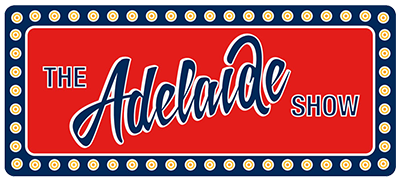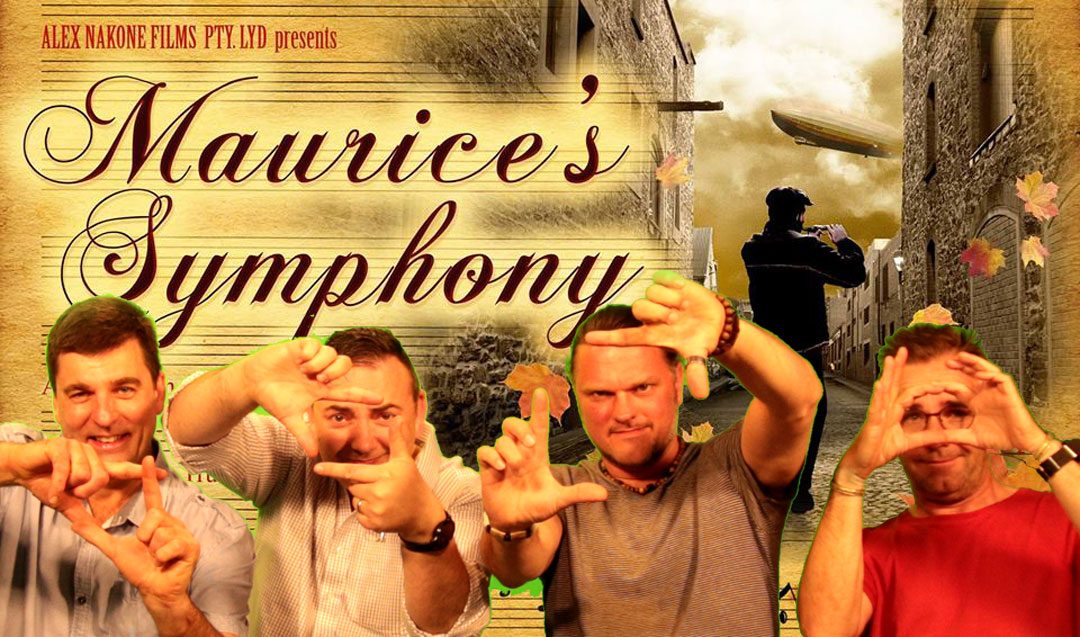In episode 171 of The Adelaide Show, we got to spend the evening with two, Adelaide filmmakers, Alex Nakone and Andrei Gostin.
They have just launched a new movie, Maurice’s Symphony
It is inspired by a true story, that Alex gleaned from one of his patients (Alex is a GP through the day) who lost his hearing due to the genetic condition, otosclerosis, and then regained it after revolutionary surgery performed in Adelaide in the 1950s.
The story contains some great insights:
- How medical science can work wonders
- How much we take hearing for granted
- How engaged Deaf Can Do was in making the project possible under their auspices
- What it takes to make a passion project a reality
We also learned about the plight of Channel 44, which loses its free-to-air frequency on January 1.
Music is by Leigh O’Donohue
Is It News
An Adelaide Photo Play
Local Film Enterprise
The Advertiser December 1916
The initial production of Adelaide’s first photo-play company was given a trial run through the cinematograph on Thursday. If the merit of fine photography can be taken as an indication of the standard of future works, the new venture should meet with success. In September last Mr. John Mathews stepped from the inter State express on to the platform of the Adelaide railway-station. Sometime before, Mr. Mathews had voyaged from South America. Soon after his arrival a new sign made its appearance in Rundle-street, and the Mathews Photo-play Producing Company was ready for business. “Remorse” is the title of the drama, and Mr. Mathews is responsible for the story and the production. The theme is what has come to be known as the “red plague.” ‘Whether the cinematograph is a fitting medium for the education of the people on sex subjects and the grave dangers of the immoral life, is a controversial point. Certainly when M. Brieux submitted to the world his dramatised pamphlet, “Damaged Goods,” it was not universally approved. The film is no doubt a less indelicate medium than the stage, but the matter of child audiences enters prominently into the question. However, considered as a story merely, there is no denying the strong moral in “Remorse.”
Making Good Jetties
Local Film Shown
NEWS January 1925
To demonstrate practical jetty construction under local condition- a film was shown under the auspices of the National Council Association at the studio of Mr. A. O. Thomas. Hindmarsh square. today. Members of the Association, representatives of councils, and others interested were welcomed by Messrs. Nor man II. Taylor (president) and W. W. Tate (secretary). The film was taken last October, when a demonstration of jetty making was given at Glenelg. This was attended by a conference of delegates from all the States. The film showed a jetty being made on virgin beach by labor saving machinery. The Cane driver and support were seen in action forming the deck and poles simultaneously. The Case nail machine, Holt caterpillar tractor, and the Ford tar mixermobile also figured prominently. The last named machine was fixed to an ordinary ton truck and heated and deposited the tar wherever desired.
Flirts And Spurts
An Adelaide Film Production
The Register 1917
It is a sign of the times that Adelaide is now possessed of a new picture producing company of its own. The Coo-ee Film syndicate has been in existence little more than two months, and the novelty of watching the artists performing in the streets before the camera is still fresh to citizens. The background of interested spectators somewhat mitigated against the naturalness of ‘Flirts and Spurt’s The first of the new company’s efforts, not all circumstances considered, the production was very creditable. The comedy was .written by Mr. K.M Yelland, and although some of the situations either were a little overdrawn or lacked sufficient detail, he displayed a striking knowledge of technique and sense of humour. The role of hero was assumed by Mr. Budd Milton, an 18 stone comedian, who was somewhat reminiscent of Fatty Arbuckle. His antics were always droll, but he avoided mistake of striving after too much effect, and his rescue of the fair heroine from the unscrupulous ‘Count Ziff,’ who was attempting to abduct her in a motor car, was something of a triumph in managerial arrangement and artistic ability. Among other prominent figures were the artist father, the drunk.’ who unconsciously assisted at unravelling the entanglement in which the lovers found themselves, and the girl pickpocket.

